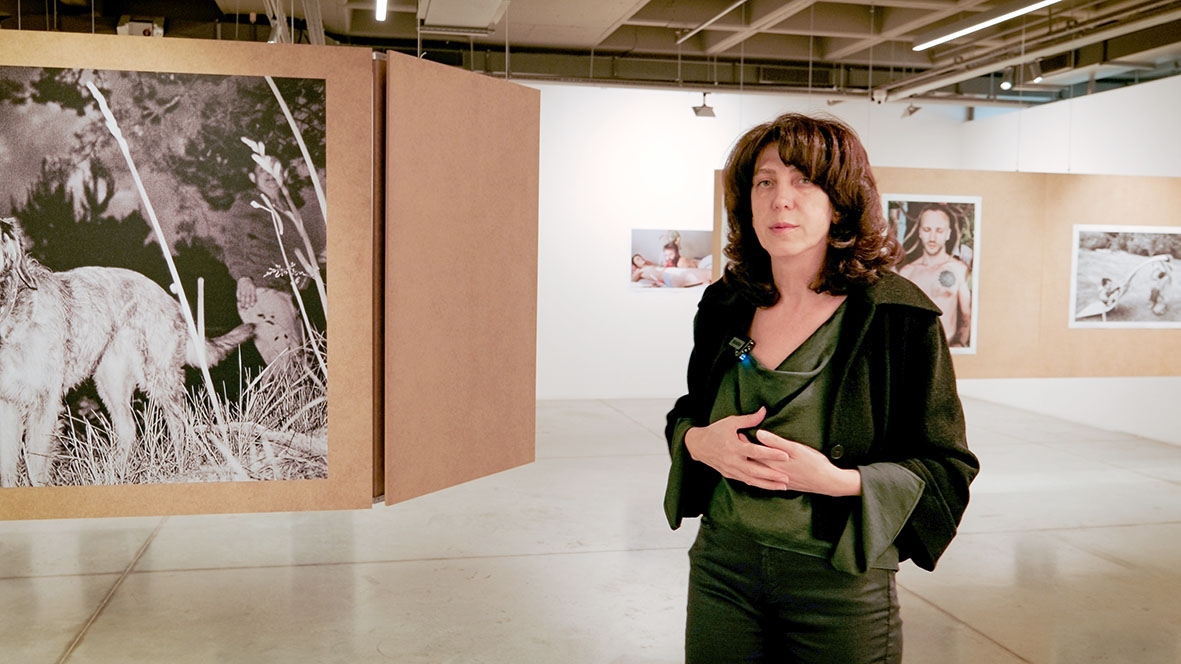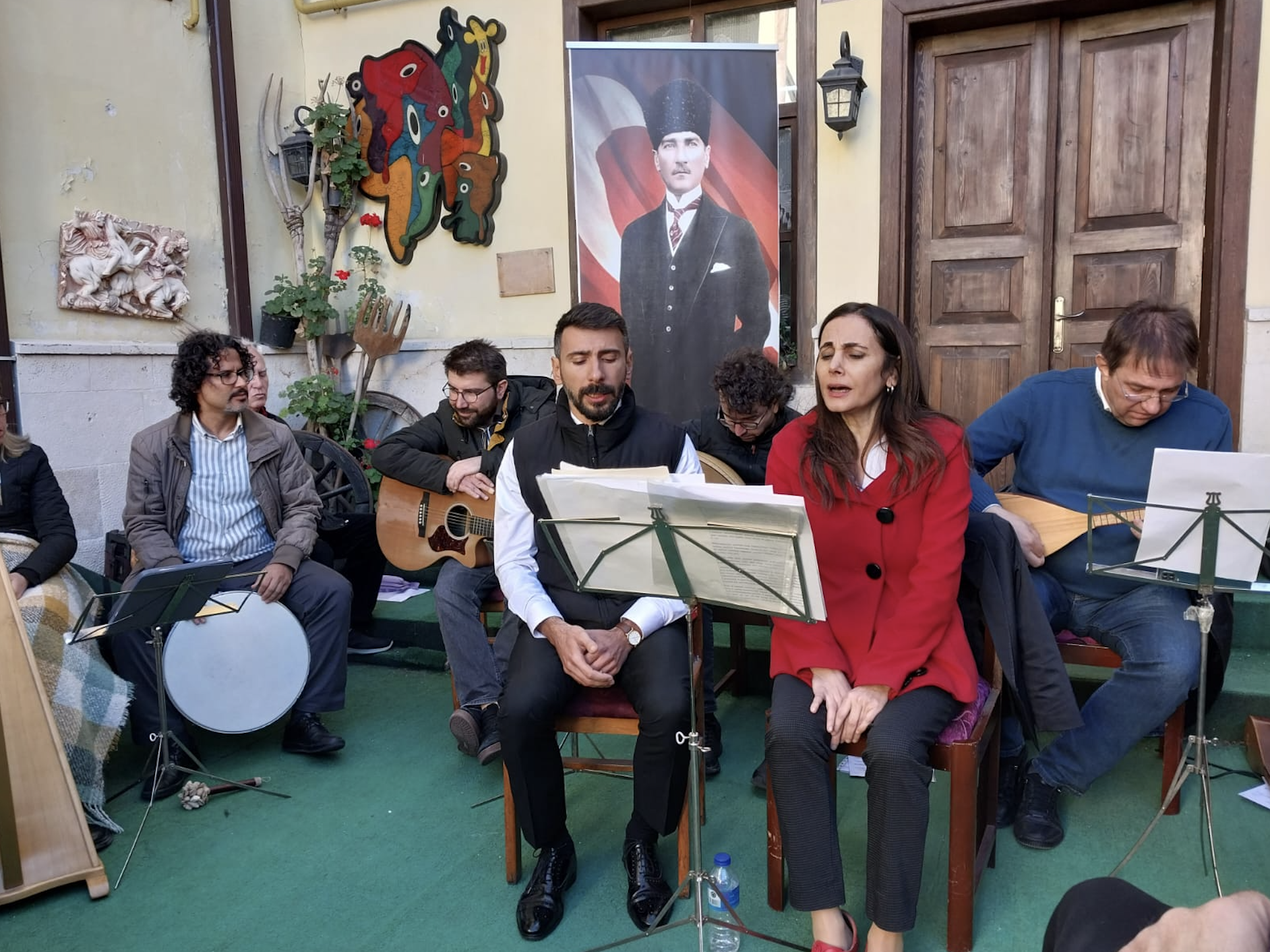The large hall at the ground floor of Ca’ Pesaro at The International Gallery of Modern Art in Venice is full of journalists; they are waiting for the press conference before the official opening of the “Arshile Gorky: 1904-1948” exhibition that same evening, the first time such a retrospective of the artist is organized in Italy. Gorky’s works came to Venice, finally, to be housed in one of the most prestigious of its museums, overlooking the Grand Canal. Some eighty works reveal to the visitor the various stages of Gorky’s evolution: from his works in the 1920’s where he tried to acquire the techniques of great European masters, to his mature works of the 1940’s.Gorky, in Venice, is a unique exhibit. To have so many of his works, few of which survived the numerous disasters during his lifetime, is in itself an event.
Gorky himself was never in Venice. The closest he came was when the boat transporting him to the US made a stop at Naples. Yet, Gorky “was never far from Italy”, reminds us Saskia Spender, President of The Arshile Gorky Foundation, “from the art of Pompeii, Uccello and de Chirico, who were among his chosen predecessors.” Yet, Gorky was not unknown or unseen in Venice, neither; his works were already exposed in Venice, for the first time at the American pavilion at the 1948 Biennale, the first after the destructive Second World War, which left much impression on Italian artists. Some of Gorky’s works were again exposed in Venice in 1962.
Arshile Gorky is remembered today as a bridge between European and American modern art, as a bridge between impressionism, cubism, and surrealism, to mature abstract expressionism, a movement in which he is remembered next to names such as Jackson Pollock or Mark Rothko. Gorky played a key role in transforming parochial American art of the early 20th century into a revolutionary modern movement. You enter the exhibit hall with a self-portrait of the artist, to progress through the different stages of Gorky’s artistic development: it starts with his portraits and still life experimenting with the styles and techniques of works of Paul Cézanne and Pablo Picasso. Then, a series of drawings revealing the hard effort the artist did to integrate practices of masters of his choice, one could see influences of Kandinsky, Léger and Mire, hard-work that made him absorb European avant-garde art without being in a European school, without being in Europe. We could also see his drawings that served for his murals of Newark Airport. In the final halls we see the artist reaching maturation, the Gorky that we know, paintings such as “The Liver Is the Cock’s Comb”, 1944, or “Landscape-Table”, 1945, with slender, black lines detached from the bright colours of yellow, red and green, liberating form from content, with dripping lines, that made him a forerunner of American Abstract Expressionism.
Many American artists who knew Gorky were struck by his vast knowledge; they thought he had acquired it while travelling in Europe, in France or Russia. But Gorky had not witnessed high art in Paris or Vienna, he was just a refugee when he crossed Europe with a short landing in Naples in 1920 on his way from Istanbul to New York. His knowledge was largely acquired by observing art at the Boston Museum and in New York, and by continuous hard work. He was a self-made artist, the quintessential American. Before being Gorky the artist, he was Vosdanig Manoug Adoian the child soldier, who, in 1915 when he was merely eleven years old (or was he twelve?) when he took part in the defence of Van, which saved him and many residents of Van, retreating to Etchmiadzin with the Russian soldiers, to become a refugee in the land of his ancestors, Armenia. Later, he took a boat with his younger sister Vartoosh to travel across the ocean to become a “foreigner” in America. It was here that Vosdanig changed his name to become Arshile Gorky, to pretend to be a relative of the famous Russian writer at times, or a Georgian émigré artist at other occasions.
“Gorky had put his past behind him in a deliberate act to free himself” writes Nouritza Matossian in her biography Black Angel, A Life of Arshile Gorky. He wanted to start a new life, by forgetting his traumatic past. But he failed. Already in the 1930’s, a decade and a half after landing on the American soil, he was searching memories of Khorkom, his birthplace, a little village on the southern shores of Lake Van, through his paintings. In the exposition, visitors can see two paintings seeking his birthplace, one titled “Image in Khorkom”, 1934-36, and a second “Image in Khorkom”, 1936. What made him search for his childhood memories, pieces of images transformed in time, in the mid-1930s, so early? What other forms, colours and smells of Khorkom do we see in the exhibit? What other memories are we trying to forget, without success?
It is this identity of the artist, the man deprived of his childhood, the refugee, the “other” – the “odar”, that reverberates elsewhere in Venice. The Biennale Arte 2019 of Venice is titled: “May You Live In Interesting Times”, problematizing complex identities, the question of displacement, as well as man’s destruction of his environment. Times are always “interesting”, yet those lived by Manoug Adoian, before he became Arshile Gorky, had a very different texture, when time accelerated so much that it negated itself, becoming self-destructive.
Gorky, in Venice, is a unique exhibit. To have so many of his works, few of which survived the numerous disasters during his lifetime, is in itself an event. The exhibit could gather works otherwise found at The National Gallery of Art in Washington DC, Tate Modern in London, Centre Pompidou in Paris, Albert-Knox Art Gallery in Buffalo, and many other works from deposited at the Calouste Gulbenkian Foundation in Lisbon. The exhibit is indeed a unique occasion to discover the artist acclaimed by art critic and essayist Clement Greenberg to have authored “some of the best modern paintings ever turned out by an American”.
Gorky was never in Venice, although he could have been. I can easily imagine the young Vosdanig Manoug Adoian, like so many other Armenian students from the Ottoman Empire, sent to Venice to study at Lyceum Murad-Raphaelian (Collegio Armeno Moorat Raphael). As a young student in Van he probably studied Armenian language and literature through books printed at the Mkhitarist Congregation at St Lazarus Monastery. Is it by chance that the first great retrospective of Gorky in Italy took place at Ca’ Pesaro, the building that once housed the Murad-Raphaelian school, from 1836 to 1850, before the current building was bought at Palazzo Zenobio? Gorky could have been to Venice only if he did not live in “interesting times”.
Visiting the Gorky exhibition in Venice, I had a feeling of deep familiarity. It is true, I have never seen such a great retrospective of Arshile Gorky, with so many of his works under one roof, unveiling his artistic development. I have only seen individual works of his, scattered through so many museums around the world. Yet, there was a feeling of expectation, anguish, and loss, which I only realized as I was watched the splendid documentary “A film on Arshile Gorky”, directed by Cosima Spender. As the documentary projected footage from his birthplace from the shores of Lake Van that I realized this loss. Who still speaks today the dialect of Van, the language in which Adoian joked and sang, lost today other than in various deformations where form and content is separated, preserved in vessels of memory?
The feeling of loss dominates the exhibit. Probably the most important work of Gorky, “The Artist and his Mother” 1926-1942, a work on which he struggled for over a decade and a half, was not there. In the first hall of the exhibit one could see a pencil drawing portrait of his mother, present as a reminder of the missing, was there, like a silent witness. What else could have heightened the feeling of loss more than this absence of the artist’s greatest oeuvre?





